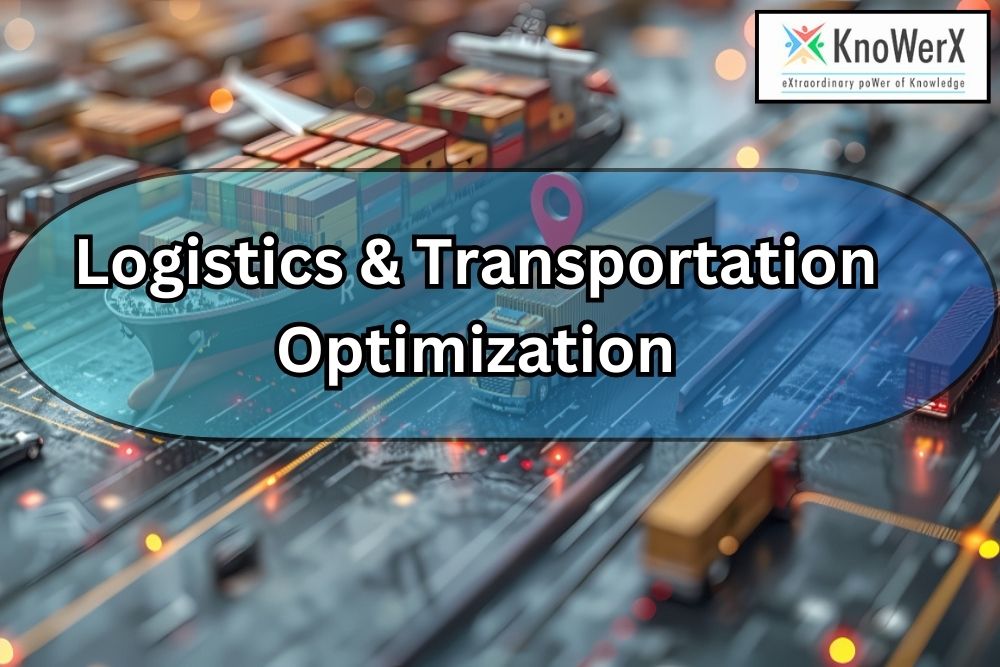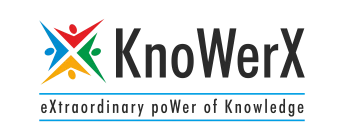Key Metrics for Measuring Logistics and Transportation Optimization

Optimizing logistics and transportation is crucial for any business looking to enhance efficiency, reduce costs, and improve customer satisfaction. KnoWerX, an industry leader in Supply Chain Management Training, brings you essential tips on the key metrics for measuring logistics and transportation optimization. With over 75 years of collective experience, our experts have honed the skills needed to help professionals achieve excellence in their fields.
On-Time Delivery Rate
The on-time delivery rate is a critical metric for measuring logistics and transportation optimization. It represents the percentage of orders delivered on or before the promised date. A high on-time delivery rate indicates efficient logistics operations and effective transportation management. To improve this metric, consider the following tips:
Implement Real-Time Tracking: Use GPS and other tracking technologies to monitor shipments and provide customers with real-time updates. This helps in quickly addressing any potential delays and keeping customers informed.
Optimize Routes: Use route optimization software to find the most efficient paths, reducing travel time and costs. Regularly reviewing and adjusting routes can further enhance delivery performance.
Improve Communication: Maintain clear communication with carriers and customers to quickly address any issues that arise. Establishing a reliable communication protocol ensures that everyone is on the same page.
Transportation Cost Per Unit
Transportation cost per unit measures the total transportation expenses divided by the number of units transported. This metric helps businesses understand the cost efficiency of their logistics and transportation operations. To improve Logistics and Transportation Optimization and reduce transportation costs per unit, consider these strategies
Consolidate Shipments: Combine smaller shipments into larger ones to take advantage of bulk shipping rates. This not only reduces costs but also minimizes the environmental impact.
Negotiate with Carriers: Regularly review and negotiate contracts with carriers to secure better rates. Building long-term relationships with carriers can also lead to additional discounts and benefits.
Leverage Technology: Utilize transportation management systems (TMS) to plan and execute more cost-effective shipments. Advanced analytics within TMS can provide insights into cost-saving opportunities.
Order Accuracy Rate
The order accuracy rate is the percentage of orders delivered without errors. This metric is essential for measuring logistics and transportation optimization because errors can lead to increased costs, customer dissatisfaction, and returns. Here are some tips to improve order accuracy:
Automate Processes: Implement warehouse management systems (WMS) and other automation tools to reduce human error. Automation ensures consistency and precision in order fulfillment.
Regular Training: Continuously train staff on best practices and the importance of accuracy in order fulfillment. Engaging employees in regular workshops and refresher courses can maintain high standards.
Implement Quality Checks: Conduct regular quality checks throughout the picking, packing, and shipping processes to catch and correct errors early. Establishing a culture of quality can significantly improve accuracy rates.
Inventory Turnover Rate
Inventory turnover rate measures how often inventory is sold and replaced over a specific period. A higher turnover rate indicates efficient inventory management and effective logistics and transportation optimization. To improve this metric, consider the following tips:
Forecast Demand Accurately: Use advanced forecasting tools to predict customer demand and adjust inventory levels accordingly. This reduces the risk of overstocking or stockouts.
Adopt Just-In-Time (JIT) Inventory: Implement JIT inventory practices to reduce excess stock and minimize holding costs. JIT ensures that inventory levels are aligned with actual demand.
Enhance Supplier Relationships: Work closely with suppliers to ensure timely delivery of materials and products, reducing lead times. Collaborative planning with suppliers can streamline the supply chain
Customer Satisfaction Score
Customer satisfaction score (CSAT) is a vital metric for assessing the success of logistics and transportation optimization efforts. It reflects how well your logistics operations meet customer expectations. To enhance customer satisfaction, consider these tips:
Prioritize Transparency: Provide customers with accurate and timely information about their orders and delivery status. Transparency builds trust and enhances the customer experience.
Streamline Returns: Make the returns process as simple and hassle-free as possible for customers. Efficient returns management can turn a negative experience into a positive one.
Solicit Feedback: Regularly gather feedback from customers to identify areas for improvement and address any concerns promptly.
Frequently Asked Questions
What are the key metrics for measuring logistics and transportation optimization?
Key metrics include on-time delivery rate, transportation cost per unit, order accuracy rate, inventory turnover rate, and customer satisfaction score. These metrics help businesses track and improve their logistics and transportation efficiency.
How can I improve my on-time delivery rate?
To improve on-time delivery rates, implement real-time tracking, optimize delivery routes, and maintain clear communication with carriers and customers. These strategies help ensure timely deliveries and customer satisfaction.
What strategies can reduce transportation costs per unit?
Reducing transportation costs per unit can be achieved by consolidating shipments, negotiating better rates with carriers, and leveraging transportation management systems (TMS) to plan cost-effective shipments.
How can I enhance my order accuracy rate?
Enhance order accuracy by automating processes with warehouse management systems (WMS), providing regular training for staff, and conducting quality checks throughout the order fulfillment process to catch and correct errors early.
What is inventory turnover rate, and why is it important?
Inventory turnover rate measures how often inventory is sold and replaced over a specific period. A higher turnover rate indicates efficient inventory management, reducing excess stock and minimizing holding costs, which is crucial for optimizing logistics and transportation.
End Notes

Acting on feedback shows customers that their opinions are valued.
By focusing on these key metrics, businesses can effectively measure and enhance their logistics and transportation optimization efforts. KnoWerX is dedicated to providing professionals with the best practices, domain knowledge, and certifications needed for professional growth. Our commitment to high-quality education and affordable training ensures that you are well-equipped to excel in your field.
For more information on our professional training programs and how we can help you optimize your logistics and transportation operations, visit KnoWerX today. Let us empower and evolve you towards success and excellence.
Image Reference: Freepik
Disclaimer: All trademarks, logos, and brand names are the property of their respective owners. All company, product, and service names used in this website are for identification purposes only. Use of these names, trademarks, and brands does not imply endorsement.



